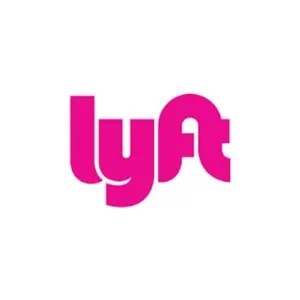Key Takeaways
- Lyft ensures safety for both drivers and passengers through in-app safety measures, emergency services, and thorough driver screenings.
- Passengers should use seatbelts, review driver profiles, travel with friends when possible, and not hesitate to address safety concerns during rides.
- Lyft’s safety for passengers includes strict driver requirements, including background checks and a zero-tolerance drug policy, along with no recording devices or firearms in vehicles.
- Lyft drivers are encouraged to manage risks by avoiding late-night driving in unsafe areas, trusting their instincts, and carrying personal security items.
Is Lyft Safe for Passengers and Drivers?
Yes, Lyft is safe for both drivers and passengers. The company has established a well-designed kit of safety tools that, combined with their features and tutorials, make driving and riding with Lyft safe.
However, many Lyft drivers and passengers still have doubts not only about Lyft but also about the whole rideshare industry.
Below, we’ll talk in detail about the abundance of safety measures and protection mechanisms these companies use to ensure driver and passenger safety. Enjoy!
Is Riding With Lyft Safe?
Overall, riding with Lyft is safe for passengers. Over the years, Lyft has done a great job of improving the ride experience for riders.
Here are some mechanisms that the company employs to make sure every passenger is safe when traveling with a Lyft driver:
Driver Requirements
Becoming a Lyft driver isn’t that easy. Drivers must have a valid driver’s license, have at least one year of driving experience, and pass a screening process.
The screening process involves a background check that would review a driver’s criminal records and driving history.
If the driver has had a sexual assault accusation or has had any link with drug usage, the company will never give them a job.
Lyft has a zero-tolerance drug policy, which means that even in states where drug usage is legal, Lyft won’t let people drive if they’re using drugs.
Also, Lyft drivers have annual background checks to spot any unusual activity after the driver starts working with Lyft.
Safety Policies
Lyft has four main safety policies that protect all passengers. First of all, it doesn’t allow drivers to have any recording devices while traveling with passengers.
Even in the states that allow it, Lyft requires all drivers to ask the passenger if they’re willing to share their identity.
Drivers are also not allowed to carry any type of weapon or firearm while driving for Lyft, even in states where local regulations permit drivers to have a firearm while traveling with passengers.
Lastly, there’s a strict age requirement for using Lyft. Passengers must be 18 years old to sign up for a Lyft account, and this includes family accounts.
Top 5 Tips to Stay Safe as a Passenger
Here are the best tips to stay safe while riding with a Lyft driver.
1. Put Your Seatbelt On
Strangely enough, many people tend to forget about this safety measure while riding with Lyft or Uber. Many riders view riding in a rideshare vehicle as similar to riding in a school bus and completely disregard common safety measures.
Remember, when you’re riding in a Lyft, you’re at just just as much as if you were driving your own car. Even if you’re in the backseat, put your seatbelt on and never blindly trust the driver.
2. Review the Driver’s Profile
Drivers, like passengers, have rankings from one to five. This is a great feature of the Lyft app, and one that does a very good job of naturally finding, highlighting, and removing low-quality drivers with ongoing safety issues.
While Lyft claims they deactivate low-ranking drivers, you can still catch one with a low rank. Don’t hesitate to cancel the ride if you see one of those.
3. Travel With a Friend
It’s always better to travel with a friend. But if you must go alone, don’t hesitate to share your ride with them. This way, they can see where you are, the license plate number, and the Lyft driver’s vehicle.
Many of the safety incidents that make the news happen to females who are alone. Naturally, the fact that there are two of you instead of just one is a deterrent in itself.
4. Don’t Hesitate to Speak
If the driver follows a strange route or doesn’t follow the rules while driving, you can always speak up and tell the driver about it.
If you’re not ready for it, or you feel like it’s better not to speak for your own safety, you can tell the driver to let you out in another location.
Brett’s Take: Thoughts From an Expert
It is important to understand that mistakes happen to any driver.
Even when they are trying as hard as they can to provide you with a safe ride, the distractions of driving passengers around town might mean an error or two on the driver’s part.
In these cases, give the driver a pass, especially if they apologize or acknowledge their mistake and take actions to prevent it from happening again.
On the other hand, in cases where a driver breaks the rules intentionally or has a complete disregard for your safety, don’t hesitate to report them.
Overall, I have had a great experience with Lyft. However, there have been certain times where I felt unsafe or uncomfortable.
In these cases, I asked the driver to safely pull over, exited the car, reported the driver, and then requested another ride.
Is Driving for Lyft Safe?
Driving for Lyft is much safer than driving a simple taxi, but still not without risks.
Here are some safety features the company provides to ensure maximum security:
In-App Safety Measures
The Lyft app offers all the needed tools to ensure safety for you and your Lyft passengers. From 24/7 assistance to roadside assistance and emergency services, the app offers a solution for all possible outcomes.
On top of that, the company provides a detailed tutorial on how and when you should use all the features. This makes it easier to navigate the app in extreme situations like accidents or natural disasters.
Passenger Interaction
You never know who’s in your back seat. As a Lyft driver, you can and will interact with people from all kinds of backgrounds and experiences.
To ensure that you’re prepared for that, Lyft has developed a passenger interaction tutorial to help you navigate unexpected situations.
Top 5 Tips to Stay Safe
While Lyft has a lot of mechanisms in place to keep you safe, it’s always better to have extra layers of protection. Here are the best five ways to stay safe while driving for Lyft:
1. Time Management
Avoid driving late at night, especially in unsafe areas. Consider wrapping up your rides at around 11:30 p.m. to minimize potential risks for you and your car.
While the best money is made late at night, sometimes it is not worth the risk. After all, the later you drive, the higher the chance you have to pick up intoxicated passengers who are not thinking clearly.
2. Trust Your Gut
If you feel unsafe in a particular situation, especially when it involves bad areas and nighttime, it’s better to trust your intuition and get out of this scenario.
Drivers have the ability to cancel rides at any point – before or during the ride. If you feel unsafe, err on the side of caution and cancel the ride.
If Lyft contacts you for any reason about the cancellation, simply explain to them that you felt unsafe and give context as to why you felt that way.
Lyft is typically pretty understanding of situations like this, especially if you have a good explanation.
3. Travel Light
Oftentimes, drivers find themselves caught up in a crime of opportunity, not always one that is premeditated or preplanned.
Plan ahead and try to remove any reason that a criminal might have to rob or assault you. Minimize what you carry with you, and avoid using a visible bag that can attract attention.
Don’t take too many cash rides, and keep your expensive items in a secure location. A locked glove compartment or the driver’s door pocket would be ideal.
4. Verify Your Passenger
A common scam on ridesharing apps is the “Say my name” scam – where a rider gets into the vehicle and asks you to say their name.
This usually a scam used by the passengers aimed at getting a free ride that somebody else pays for. In essence, they steal a ride that somebody else called.
A simple way to avoid this scam is to keep your doors locked until passengers are properly identified.
Confirm their name and destination before unlocking the doors. This helps prevent unauthorized individuals from entering your car.
5. Carry a Security Item
Consider carrying personal security items. A small pepper spray in an accessible place can save your life in a dangerous situation. While prevention is key, having such items can make you feel and be more secure.
Brett’s Take: Thoughts From an Expert
In all the years I have driven for Lyft, I’ve only felt unsafe a handful of times. These times were usually at night, and in those times, I usually took the ride instead of trusting my gut.
Luckily, I drive in a bit of a small city, taking great care to avoid the areas of town in which I know crime is common.
As I’ve mentioned throughout this post, staying safe is typically pretty simple if you just use your head and plan.
Of course, there will always be situations that you can’t avoid, but for the most part, simply planning a safe night of driving generally goes a long way.
Final Thoughts
Driving and riding with Lyft is safe. However, you should always make sure to have extra layers of protection, even if the company has strict security policies.
If you know more tips and tricks to stay safe as a Lyft driver or passenger, don’t hesitate to share them in the comments.






